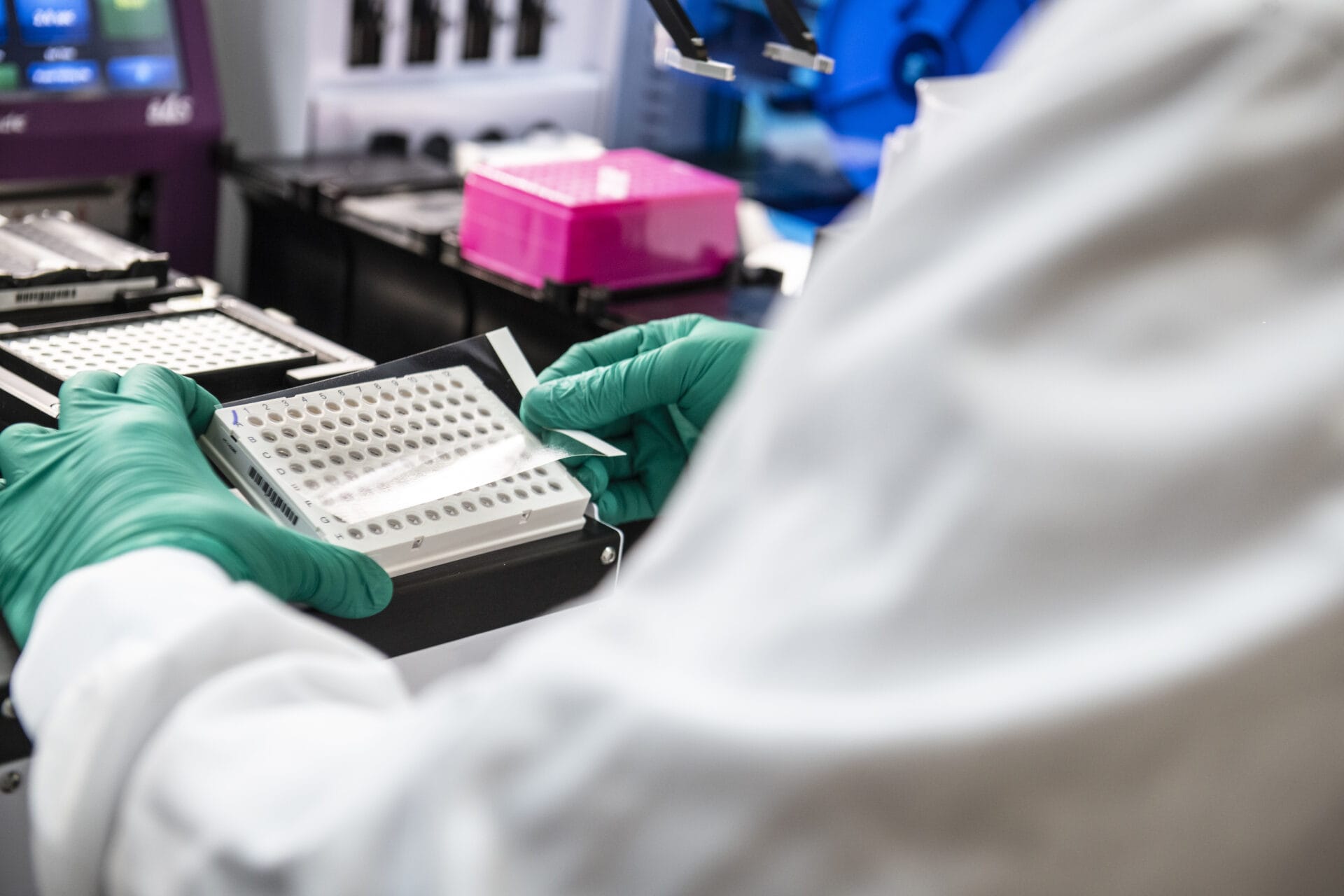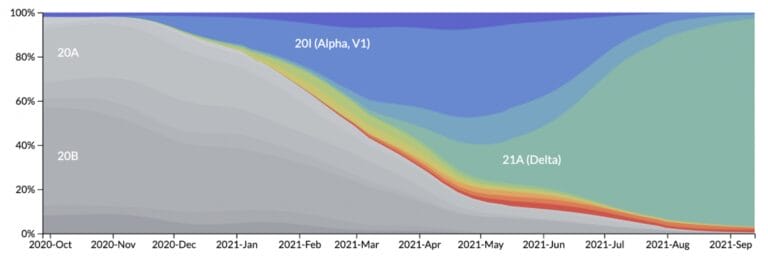What is Genomic Surveillance?
By Valerie Vancollie, Scientist and Product Lead for the COVID-19 Genomic Surveillance team at the Wellcome Sanger Institute.
Image credit: Greg Moss / Wellcome Sanger Institute

Genomic surveillance involves sequencing the genetic material of pathogens and identifying changes linked to the origins or characteristics of a disease.
- In an era of genomics, where the cost and time necessary to sequence a genome has shrunk dramatically, a new type of disease surveillance becomes possible - that of the genome.
- Genomic surveillance works on the basis that everything with a genome (humans, animals, plants, bacteria, viruses…) needs to replicate their genetic material in order to reproduce, and this results in changes known as mutations.
- The rate and scope of mutations will vary from species to species, but they always happen and can be tracked.
- The ever-changing nature of the genome lies at the heart of our ability to perform genomic surveillance. Put most simply, this is the monitoring of genetic changes in pathogens by sequencing the infectious agents afflicting different people.
- Knowing the genome of a particular pathogen is helpful on its own, but the true power of surveillance lies in sequencing many examples of the same type of pathogen – for example, SARS-CoV-2. This allows us to start building a picture of how a pathogen is changing and evolving.

How do we use the information that genomic surveillance gives us?
- It allows us to identify new variants and helps inform the actions of those charged with responding to an outbreak.
- Genomic surveillance is particularly interesting when changes in the genome stay and start to spread. When this happens, you can have a new variant whose characteristics might be different to the one which is already common.
- New variants might be more infectious, or more deadly – or less infectious or less deadly.
- By knowing who has what variant, doctors begin to see how the disease caused by a new variant differs from that in people with older variants. The power of this approach has been clear in the Covid-19 pandemic.
Tracking the source of a disease
Changes, or lack of changes, in a genome tell us about how the pathogen is spreading. This information may be vital in understanding and controlling outbreaks of disease. For example:
- If two genomes have no or very few differences, then they are closely related and are likely to have come from a common source. Perhaps the people involved caught the disease from the same person.
- If two genomes have lots of differences, then they are not closely related and probably come from different sources. If the people involved caught the disease in the same area, but the pathogens have lots of differences in their genomes, this indicates there are different variants circulating that area. This type of information has been key in recent outbreaks of Ebola in Africa.
- Information such as this can be critically important in determining how and when an infectious agent was introduced. From settings as different as a care home to an entire country, knowing how closely related sequenced samples are tells us whether the infectious agent was brought in once and spread, or whether it was introduced lots of different times.
Article written by Valerie Vancollie, Former Scientist and Product Lead for the COVID-19 Genomic Surveillance team at the Wellcome Sanger Institute.